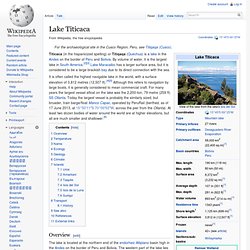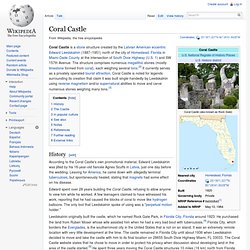

Ancient Aliens — Stones of Carnac — History.com Videos. Carnac. Carnac (Breton: Karnag) is a commune beside the Gulf of Morbihan on the south coast of Brittany in the Morbihan department in north-western France.

Its inhabitants are called Carnacois. Carnac is renowned for the Carnac stones – one of the most extensive Neolithic menhir collections in the world – as well as its beaches, which are popular with tourists. Located on a narrow peninsula halfway between the medieval town Vannes and the seaside resort Quiberon, Carnac is split into two centres - Carnac-Ville and Carnac-Plage (the beachfront). In total there are five beaches, including la Grande Plage, and further to the east, Plage Men Dû and Beaumer. Standing stones[edit] Stones in the Menec alignment The Carnac stones were erected during the Neolithic period which lasted from around 4500 BC until 2000 BC. History[edit] Tumulus of Saint-Michel In 1864, La Trinité-sur-Mer and its port were separated from the commune to create their own commune and parish.
Tourism[edit] Neighboring communes[edit] Lake Titicaca. View from space, May 1985 (north is at right) A reed boat on Lake Titicaca Titicaca (in the hispanicized spelling) or Titiqaqa (Quechua) is a lake in the Andes on the border of Peru and Bolivia.

By volume of water, it is the largest lake in South America.[2][3] Lake Maracaibo has a larger surface area, but it is considered to be a large brackish bay due to its direct connection with the sea. It is often called the highest navigable lake in the world, with a surface elevation of 3,812 metres (12,507 ft).[4][5] Although this refers to navigation by large boats, it is generally considered to mean commercial craft. For many years the largest vessel afloat on the lake was the 2,200-ton, 79-metre (259 ft) SS Ollanta. WikiMiniAtlas 15°50′11″S 70°00′53″W / 15.8364°S 70.0147°W / -15.8364; -70.0147, across the pier from the Ollanta).
Overview[edit] Map of Lake Titicaca Since 2000 Lake Titicaca has experienced constantly receding water levels. Temperature[edit] Name[edit] Coral Castle. History[edit] According to the Coral Castle's own promotional material, Edward Leedskalnin was jilted by his 16-year-old fiancée Agnes Scuffs in Latvia, just one day before the wedding.

Leaving for America, he came down with allegedly terminal tuberculosis, but spontaneously healed, stating that magnets had some effect on his disease. Edward spent over 28 years building the Coral Castle, refusing to allow anyone to view him while he worked. A few teenagers claimed to have witnessed his work, reporting that he had caused the blocks of coral to move like hydrogen balloons. The only tool that Leedskalnin spoke of using was a "perpetual motion holder. " Leedskalnin originally built the castle, which he named Rock Gate Park, in Florida City, Florida around 1923. Leedskalnin continued to work on the castle up until his death in 1951.
Leedskalnin charged visitors ten cents a head to tour the castle grounds. The Castle[edit] A view from within Leedskalnin's Coral Castle. The Thirty Ton Stone. Blast from the Vast. Leave aside, for a moment, the question of why Ted Cranford wanted to perform a CT scan on the head of a sperm whale and consider instead how he could pull it off.

First, of course, he would need a dead whale, preferably a young one that had beached itself on the coast of California near his home. Then he would need a device big enough to scan a 600-pound head. And he would have to figure out how to keep the head preserved until he could set up the scanning machinery. Finding a whale turned out to be the easy part. One fall day, a newly dead infant sperm whale conveniently appeared on San Gregorio Beach, just south of San Francisco. When Cranford began looking for funding to scan his whale head, several scientific agencies politely but firmly turned him down. Cranford, however, is a man not easily parted from his ideas. In graduate school Cranford first used high-tech medical imaging to probe the anatomy of a mammal—in that case a dolphin’s head.